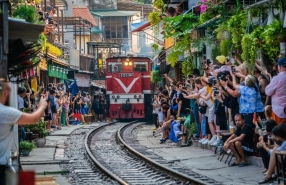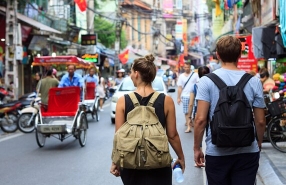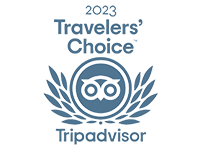Caodaism In Vietnam - Discover Top Caodai Temples Vietnam

Caodaism in Vietnam is one of the country's major religions. Founded in the early 20th century, it embodies a unique religious syncretism by bringing together elements of Buddhism, Christianity, Taoism, and Confucianism. Visiting Cao dai temples in Vietnam offers not only a deep insight into Vietnamese culture but also an immersion into colorful and symbolic architecture. If you wish to visit Caodaism temples in Vietnam, follow the guide from AUTOUR ASIA, local travel agency in Vietnam, to better understand this original faith and its emblematic sacred sites.
Table of Contents
I. What is Caodaism?
Cao Dai, or Caodaism in Vietnam, was founded in 1926 in Tay Ninh province, southern Vietnam. According to belief, the founder received a spiritual message during a spiritism session, inviting him to establish a new religion intended to unite the world's beliefs.
Caodaism in Vietnam seeks to merge the moral teachings of Buddhism, Christianity, Taoism, and Confucianism, thus promoting universal love, tolerance, peace, and spiritual progress. The doctrine venerates a unique supreme God, called Cao Dai, while honoring great spiritual figures such as Jesus Christ, Buddha, Confucius, Lao Tzu, and even Victor Hugo.
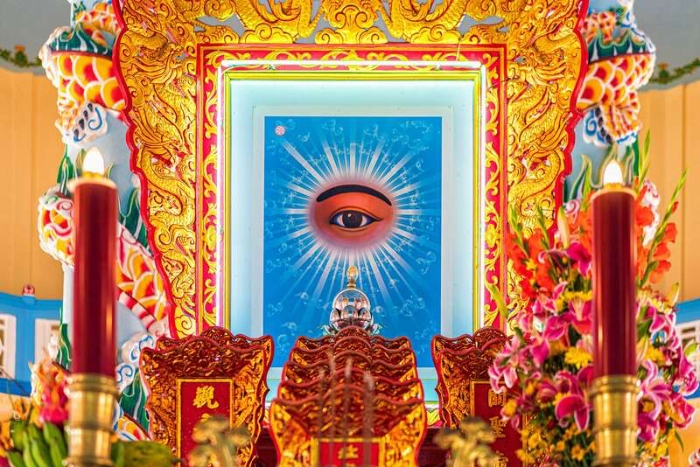
Cao Dai in Vietnam has a hierarchical structure similar to that of the catholic church, with a pope, cardinals, archbishops, and priests. The ceremonies of the Cao Dai Vietnam religion are highly codified, with specific prayers and chants performed several times a day in Cao Dai temples.
II. Significance of Caodaism in Vietnam
Caodaism in Vietnam was born in a troubled historical context, marked by French colonization and social upheavals in Vietnam. For many Vietnamese, it represents a hope for harmony between Eastern and Western spiritual traditions. By merging the teachings of Buddhism, Taoism, Confucianism, and Christianity, Caodaism has created a new religious path, both universal and deeply rooted in Vietnamese identity. This ability to unify diverse beliefs under the same spiritual banner offered followers a response to the political and cultural uncertainties of the time. Today, many foreign visitors come to visit Cao Dai temples in Vietnam to discover this unique spiritual richness.
Beyond its religious dimension, Caodaism in Vietnam also symbolizes a strong affirmation of national identity. It embodies the Vietnamese people's desire to preserve their traditional moral values while adapting to external influences. The Cao Dai temples in Vietnam, with their colorful architecture and particular rituals, bear witness to this living heritage. By visiting these sacred places, those who wish to explore Vietnam religious temples can feel the deep aspiration for unity, tolerance, and peace that this singular faith advocates.
III. Caodaism vs Buddhism: What Are the Differences?
Among the religions in Vietnam, although Caodaism in Vietnam borrows many elements from Buddhism—notably the belief in reincarnation, karma, and the liberation of the soul—it clearly distinguishes itself by its syncretic character. Where Vietnam Buddhism favors an individual path of enlightenment through meditation, compassion, and wisdom, Vietnamese Caodaism aims to unite in a single faith the fundamental teachings of several great spiritual traditions such as Christianity, Taoism, and Confucianism.
>>> Linh Ung Pagoda in Da Nang
>>> Thien Mu Pagoda in Hue
>>> One Pillar Pagoda
Furthermore, the organization of worship within Caodaism in Vietnam differs significantly from that of Buddhism. Caodaism has a structured clerical hierarchy, with dignitaries and codified ceremonies, which more closely resembles the model of Christian churches than that of traditional Buddhist pagodas. This uniqueness is notably reflected in the architecture of Caodaism vietnam temples, which travelers can discover by choosing to visit religious temples in Vietnam across the country.
IV. Where to visit Cao Dai temples in Vietnam?
Exploring Caodaism vietnam, the Cao Dai temples in Vietnam are much more than mere places of worship: they embody the full spiritual richness and originality of Caodaism in Vietnam. Characterized by their flamboyant architecture, bright colors, and esoteric symbols, these temples offer a unique experience to those who wish to visit the temples.
1. Cao Dai temple of Tay Ninh
Address: Pham Ho Phap, Hoa Thanh city, Tay Ninh, Vietnam
Google Map: https://maps.app.goo.gl/XPhQc4eSfSwmFM6p8
Opening Hours: Daily, from 6:00 AM to 5:00 PM. Main ceremonies take place at 6:00 AM, 12:00 PM, 6:00 PM, and midnight.
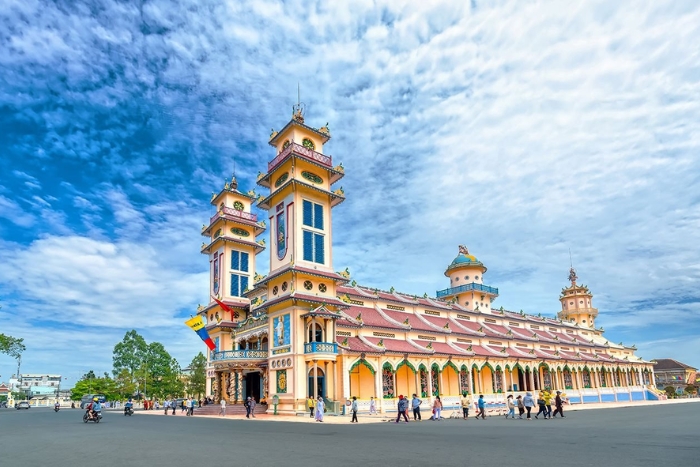
The Cao Dai temple in Tay Ninh is a spiritual center of Caodaism and one of the most emblematic temples in Vietnam. Built in 1926, it is the world headquarters of Caodaism in Vietnam. This temple is an architectural masterpiece where influences from various religions such as Buddhism, Christianity, and Taoism converge, illustrating the syncretic nature of Caodaism.
The architecture of the Cao Dai temple in Tay Ninh is impressive, with its bright colors, ornate mosaics, and the representation of the Divine Eye, a sacred symbol that dominates the temple. The temple is surrounded by gardens and statues representing religious and mythological figures. The interior of the Cao Dai temple in Vietnam is decorated with frescoes that tell the story of Caodaism and its teachings.
>>> 2-day itinerary in Tay Ninh
>>> 3-day trip to Tay Ninh
2. Cao Dai temple of Da Phuoc in Da Lat
Address: Ward 11, Da Lat city, Lam Dong province
Google Map: https://maps.app.goo.gl/SDgi551y7nGj9hmn9
Opening Hours: From 7:00 AM to 7:00 PM daily
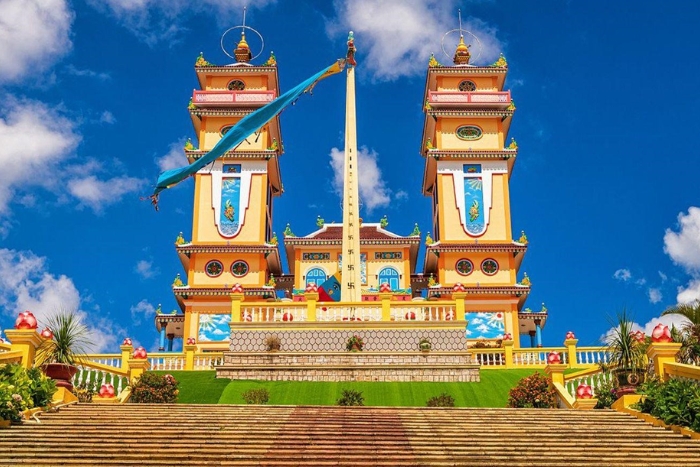
The architecture of the temple in Da Lat is a replica of model No. 2 of the Cao Dai temple of Tay Ninh but adapted to local specifics. The temple consists of three main sections: the hall of spiritual unity, the hall of the nine divine circles, and the hall of the eight trigrams. These structures of Caodaism Vietnam temples are adorned with spiritual symbols and religious decorations, creating a mystical and sacred atmosphere.
Inside, frescoes depict divine and mythological scenes, and visitors can observe religious rituals where practitioners, dressed in their traditional robes, pray and sing in unison. The temple is an active place of worship for more than 80,000 followers, making it an essential spiritual center for the local Caodaist community. The Cao Dai temple of Da Phuoc in Da Lat is an ideal place for those who wish to visit Cao Dai temples in Vietnam in a calm and natural setting, away from tourist areas.
3. Cao Dai temple of Saigon
Address: Tran Hung Dao, Ward 1, District 5, Ho Chi Minh City, Vietnam
Google Map: https://maps.app.goo.gl/AgNSsWxXBm7igdX37
Opening Hours: From 7:00 AM to 7:00 PM daily. Main ceremonies take place at 6:00 AM, 12:00 PM, 6:00 PM, and midnight.
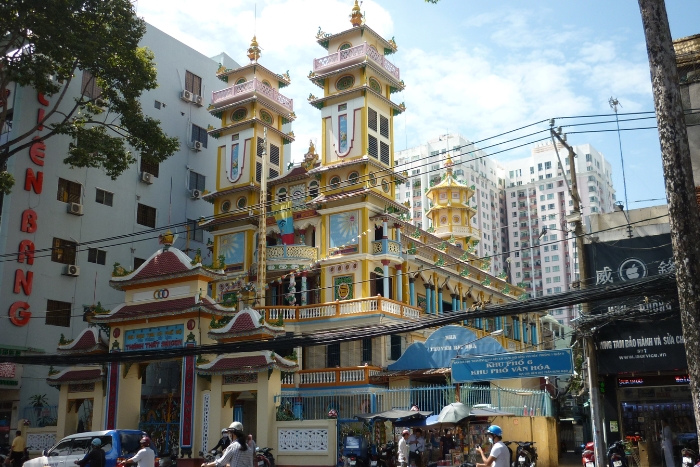
The Cao Dai temple of Saigon is one of the most important Caodaism temples in the city, serving as the seat for the Caodaist community of Ho Chi Minh City. Built between 1999 and 2001, it is one of the largest Caodaism temples in urban Vietnam, with a distinctive three-story architecture. This temple is also the representative office of the Cao Dai temple of Tay Ninh in Ho Chi Minh City.
The Cao Dai temple of Sai Gon is an active place of worship for the local Caodaist community and an interesting site for those who wish to discover Caodaism in Vietnam in an urban setting. Visitors are invited to observe the ceremonies from the balconies, remaining silent and respectful, and to dress modestly.
4. Cao Dai temple in Ben Tre
Address: My Thanh, Giong Trom, Ben Tre, Vietnam
Google map: https://maps.app.goo.gl/XQPZ36VYX9YrYaxh7
Opening hours: From 7:00 a.m. to 5:00 p.m. daily
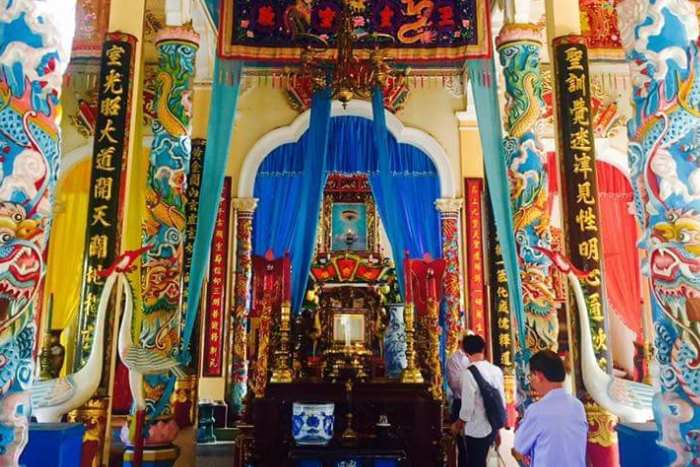
The Cao Dai temple in Ben Tre is one of the important temples of Caodaism, although it is less visited than the Cao Dai temple of Tay Ninh. Located in the calm countryside of the Mekong Delta, this Caodaism temple in Vietnam offers visitors an authentic and intimate spiritual experience. Its architecture, although modest compared to larger temples, reflects the simplicity and serenity that characterize Caodaism. This temple is a gathering place for local believers, where they come to pray and take part in daily ceremonies. The surrounding natural setting, with rice fields and canals typical of the delta, adds to the peaceful atmosphere of the place.
What to do in Ben Tre? This is an excellent choice for those wishing to visit Cao Dai temples in Vietnam away from the crowds and in full immersion in the local religious culture.
V. Practical tips for visiting Cao Dai temples
Discovering more about Caodaism in Vietnam through its temples can be a fascinating spiritual and cultural experience. If you plan to discover the religion in Vietnam and its places of worship, here are some practical tips to help you make the most of your visit:
Dress code: Dress modestly — shoulders and knees must be covered. Avoid clothing that is too flashy or provocative.
Respect the worship: During ceremonies, remain silent, avoid walking in front of praying devotees, and ask permission before taking photos.
Best visiting times: Main prayers take place four times a day (6 a.m, 12 p.m, 6 p.m, and midnight). The noon ceremony is generally the most accessible for visitors.
Special festivals: The Day of Great Forgiveness is a unique moment to witness exceptional Caodaist celebrations.
In general, visiting Caodaism temples in Vietnam is a fascinating experience that allows you to discover a unique religion deeply rooted in Vietnamese culture. By respecting local customs, dressing appropriately, and taking the time to understand the spiritual meaning of these places, you will be able to fully appreciate the richness of this religious tradition. Whether to observe religious ceremonies, admire the architecture of the temples, or simply enjoy the serenity that reigns there, Cao Dai temples in Vietnam offer a valuable insight into Vietnamese spirituality.
Feel free to contact AUTOUR ASIA, Travel agency in Hanoi Vietnam, to organize your Southern Vietnam tour and explore Caodaism in Vietnam more deeply.
Suggested references:
>>> Vietnam Travel Guide
>>> Vietnam itinerary 10 days
>>> 15 day Vietnam itinerary
>>> Vietnam Packages Tours
>>> Vietnam Tours
Caodaism in Vietnam has around 2 to 3 million followers, mainly in southern Vietnam. There are also Cao Dai communities abroad, particularly in the United States, France, and Australia, where Vietnamese diasporas live.
Because Caodaism Vietnam was founded in 1926 in Tay Ninh, in southern Vietnam. This is where its spiritual center, the Great Cao Dai Temple in Vietnam, is located. The religion quickly developed in this region, where it was well accepted. That is why the majority of the temples are still found in the south of the country today.
Yes, there are day trips available from Ho Chi Minh City. These tours usually include a visit to the Great Temple of Tay Ninh, one of the Cao Dai temples in Vietnam, as well as the Cu Chi tunnels, another important historical site. The visits are often organized to arrive at the temple by noon, to attend the main ceremony (around 12 p.m), a fascinating moment when devotees dressed in white sing and pray in a striking setting.
You can find out more about our South Vietnam tours:
Related travel guide
Other similar articles
CUSTOMIZABLE BY LOCAL EXPERTS
Personalized trip at the original price!
REFUND GUARANTEE
We believe in our work and promise to give you money back.
GOOD PRICE / QUALITY
95% satisfied more than expected!
24/7 LOCAL SUPPORT
We are always available online to provide assistance at any time.
Most read articles
Autour Asia is highly recommended on
Embracing the mission of "Satisfied more than expected" and providing authentic experiences, we have received numerous recommendations on reputable travel forums:











